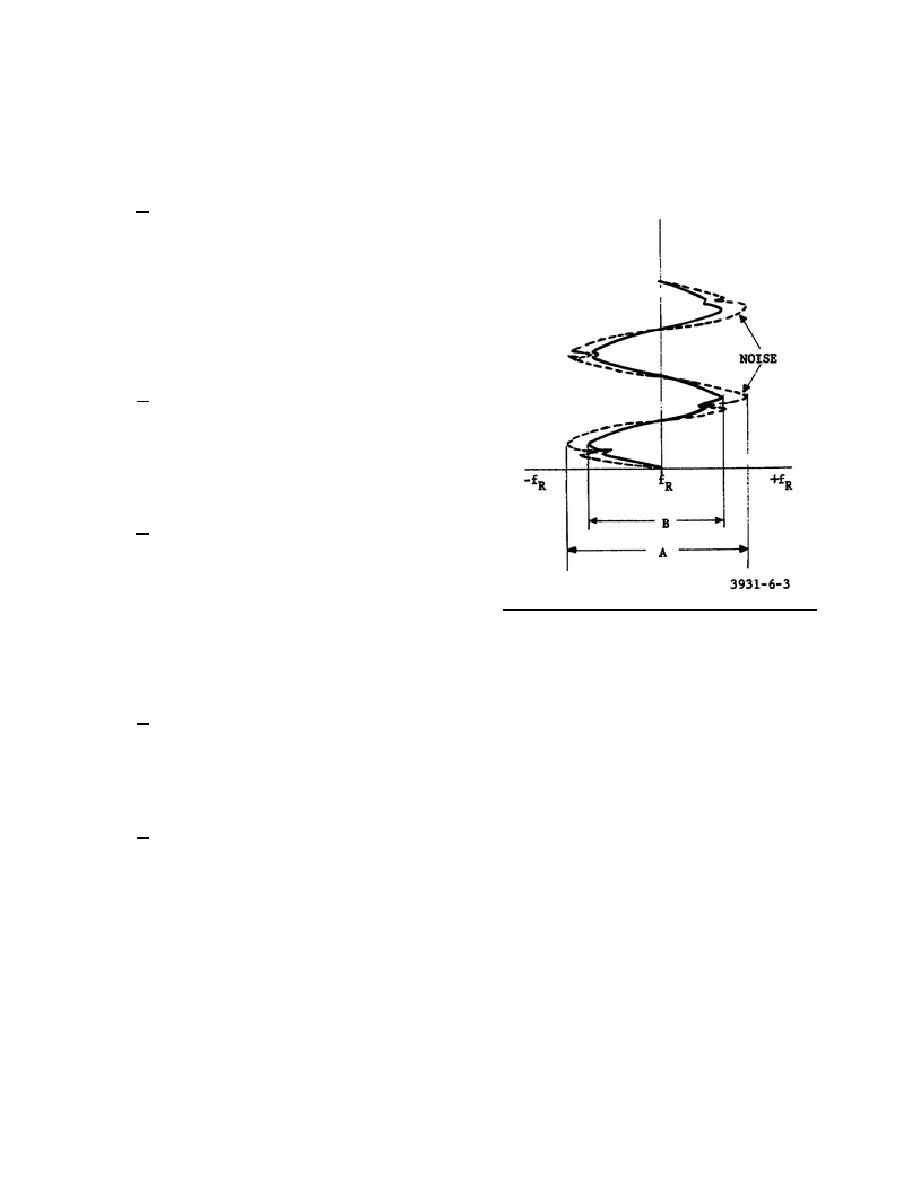
high input angle-modulation indexes, requiring only a moderate amount of loop-feedback gain, networks can be
designed which will ignore the amplitude-modulated portions of the noise. As the modulation index of the input
signal is increased, the amplitude portion of the noise modulation causes the threshold to rise to some
intermediate value between the 6-db lower angle-modulation limit and the high threshold it would have had
without feedback.
h. An example of the action of FMFB can
be seen in figure 112. Let A indicate the normal
amount of carrier deviation that would occur in the
IF signal if FMFB were not used. Noise would
cause unwanted carrier deviations as shown.
Introduction of FMFB will minimize carrier
deviation due to noise as shown in waveform B.
3-25.
AUTOMATIC FREQUENCY CONTROL
a. During the receiving-demodulation
process, the local-oscillator output is mixed with the
incoming carrier signal to produce an intermediate
frequency.
The difference between the local
oscillator and carrier frequencies is the intermediate
frequency.
b. If the carrier frequency or the local-
oscillator frequency drifts, the average intermediate
frequency will change. If the average frequency of
the IF signal is permitted to drift, the extremes of the
carrier deviation will exceed the limits of the IF
Figure 112. FMFB effects on carrier deviation.
amplifier bandpass. As a result, distortion will
appear in the demodulated signal. Therefore, it is necessary to produce an IF signal whose average frequency is
centered in the IF amplifier bandpass. This will insure that the deviation of the incoming signal will not exceed
the limits of the IF amplifier bandpass.
c. To insure the centering of the signal in the IF amplifier bandpass, it is necessary to have a circuit that
will sense the average frequency (or phase) changes and produce a voltage that will change the frequency of the
local oscillator. The automatic frequency control (AFC) circuit will produce this corrective voltage.
3-26.
FREQUENCY-SENSITIVE AFC LOOP
a. The block diagram of an AFC circuit is shown in figure 113. Here the mixer combines the local-
oscillator and incoming carrier frequencies and generates a difference (intermediate) frequency. The IF amplifier
increases the amplitude of the signal to a level sufficient for demodulation by the discriminator.
344 L3
120



 Previous Page
Previous Page
